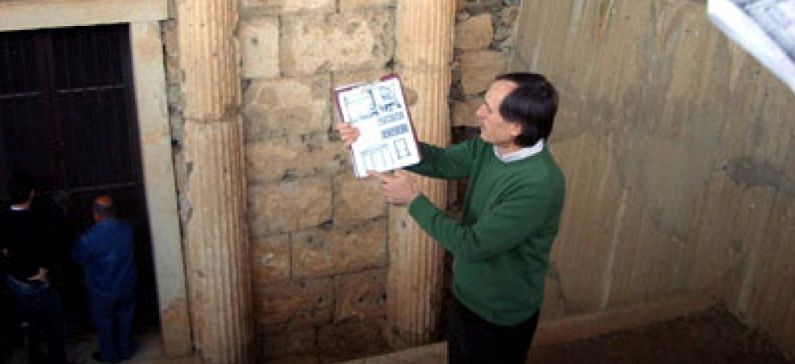
In search of Vergina’s secrets
An impressive fortification of the ancient city of Vergina had been revealed recently by the university’s excavation at the ancient city of Macedonians. Panagiotis Faklaris, who has been excavating since 1992 that part of the city, said last November in a statement in Aristotle University of Thessaloniki, «all the architectural features of the wall, but the archaeological data also, stratified all transpiring portion of the enclosure, unanimously conclude that the construction goes back to the reign of Cassander, particularly after the early third century BC, a time when Macedonia is facing a tumultuous period, of civil conflicts and external interventions. The location of the Pierian city, on the vehicular road leading from the ports of Pydna and Methoni to Upper Macedonia, required the fortification in order to ensure and control this important crossing».
The archaeological findings are impressive because the wall was discovered preserved in excellent condition and in a significant high of 1.90 m. At this point, the excavation team gives a struggle with fills, as the depth at which the wall is revealed, often exceeds 4 -5 feet, because of the volume of sediment that were accumulated over a torrent that acted in antiquity. That is why the monument is in good condition in fact, because the immense deposits of fills are protecting it from physical and human damage. The turrets reaching the impressive thickness of 2.80 meters and being supported in the middle by sturdy rectangular and semi-circular towers, the wall was clearly crafted with care to face the danger, even from war machines attack. The fortification rises to towers and battlements by stonemason scales, five of which have been researched. Next to towers, capped by a semicircular viewing, they found small gates which were used to surprise the enemy.
The archaeological discovery of the monumental wall complements some mobile findings, as well as charred seeds of legumes and cereals – food waste of the time that the scientific team by Faklari datable to the 2nd and 1st century BC.







